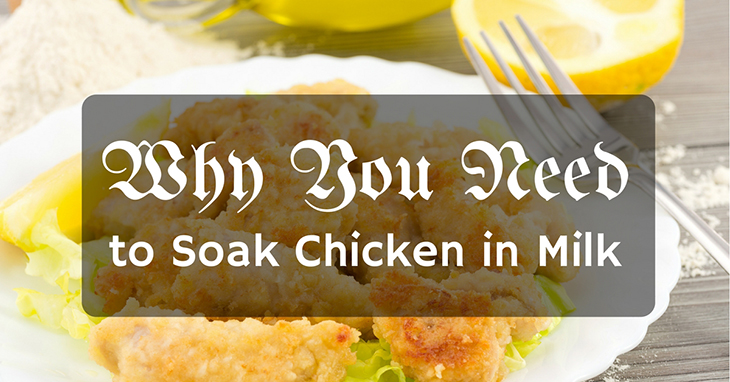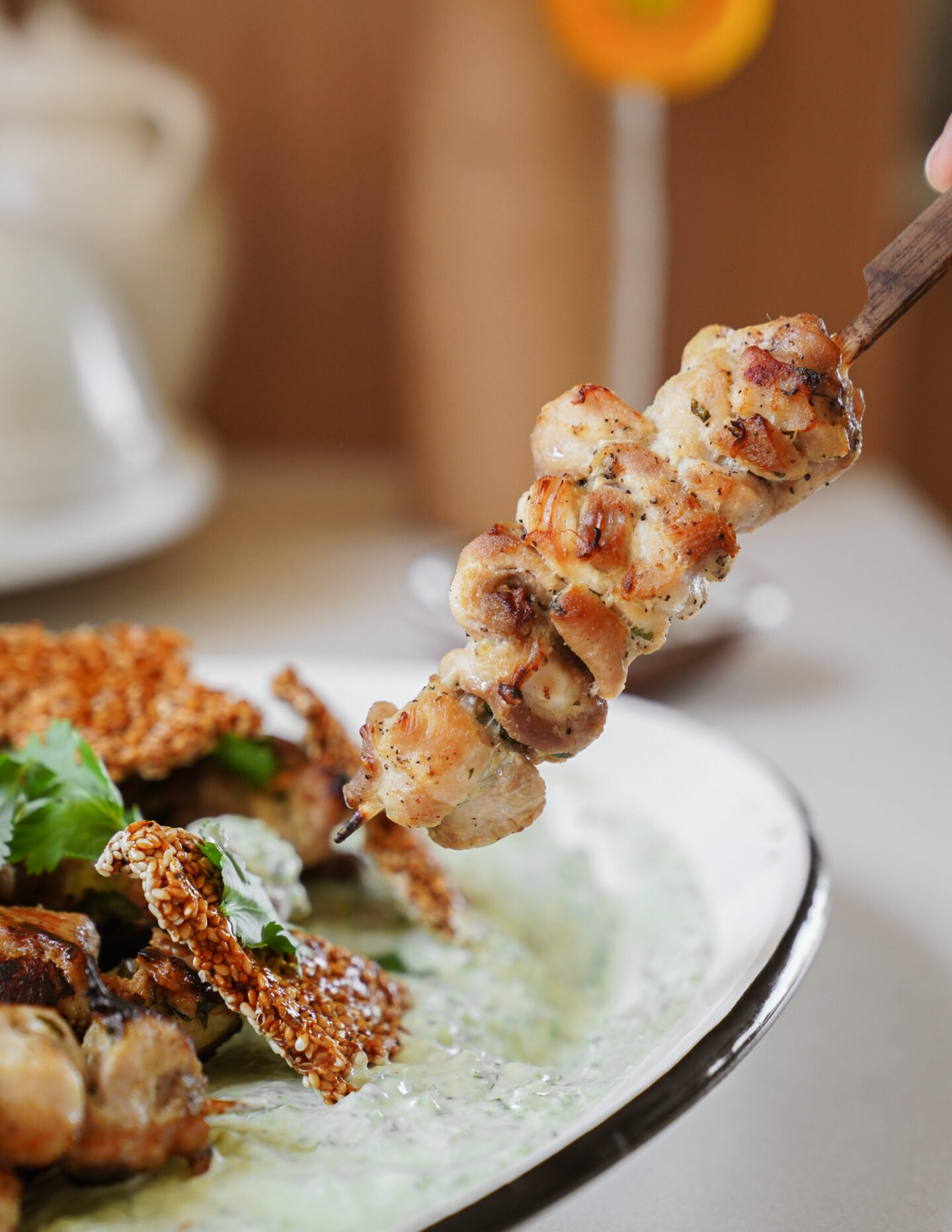Soaking chicken in milk before cooking is an age-old technique used by home cooks and professional chefs alike. But why exactly do we soak poultry in milk? What does this process do to the texture and flavor of chicken? In this article we’ll explore the science, benefits, and best practices for soaking chicken in milk.
The Science Behind Soaking Chicken in Milk
While it may seem unorthodox, there is solid science behind soaking raw chicken in milk Milk contains lactic acid, which is an acidic compound that acts as a natural tenderizer for meat The lactic acid breaks down tough collagen proteins in the chicken, resulting in a more tender texture after cooking.
Additionally, milk contains natural enzymes like cathepsin D that further break down muscle fibers in poultry. The calcium in milk aids this enzymatic process. Together, the lactic acid and enzymes in milk literally soften and “pre-digest” the chicken at a molecular level.
Soaking also allows components like calcium, vitamin B12, and other water-soluble nutrients in the milk to be absorbed into the chicken. This enhances the nutritional value of the final dish.
The Benefits of Soaking Chicken in Milk
So what are the tangible benefits of soaking chicken in milk? Here are some of the top reasons cooks use this technique:
-
Increased Tenderness – As explained above, the primary benefit is increased tenderness and a softer texture, especially in typically tough cuts of chicken.
-
Added Moisture – Soaking in milk hydrates the chicken, infusing it with moisture for a juicier end result.
-
Milder Flavor – The milk helps mellow out strong “gamey” flavors that can be present in certain types of chicken.
-
Velvety Texture – Milk-soaked chicken can have a velvety smoothness when cooked properly. The milk proteins essentially coat the fibers.
-
Buttery Flavor – Subtle dairy nuances are imparted into the chicken, adding a pleasant buttery or creamy note to the meat.
-
Versatility – Milk-marinated chicken works well in a wide variety of cuisines and dishes like casseroles, curries, fried chicken, roasts, and more.
Best Practices for Soaking Chicken in Milk
To properly soak chicken in milk, follow these tips:
-
Use Cold Milk – Make sure milk is thoroughly chilled before adding raw chicken. Cold milk slows bacterial growth.
-
Cover Fully – Submerge the chicken fully in the milk. All surfaces should be coated.
-
Refrigerate – Store the soaking chicken covered in the fridge at 40°F or below.
-
Time It Right – For maximum tenderizing effects, soak for at least 4 hours but no more than 24 hours.
-
Use Fresh Milk – Don’t reuse milk after soaking raw chicken in it. Discard it after a single use.
-
Pat Dry – Pat chicken dry with paper towels before cooking to remove excess milk.
-
Season Well – Make sure to season soaked chicken additionally before cooking.
-
Cook Properly – Cook soaked chicken to an internal temperature of 165°F to eliminate any bacteria.
Types of Milk for Soaking Chicken
The most commonly used milk varieties for soaking chicken are:
-
Whole Milk – The classic choice, whole milk deeply tenderizes chicken.
-
Buttermilk – Tangy buttermilk adds flavor and has an even stronger tenderizing effect.
-
Yogurt – Plain yogurt also tenderizes well but imparts a unique tang.
-
Powdered Milk – Reconstituted powdered milk tenderizes similar to fresh milk.
For the strongest results, cultured milk products like buttermilk and yogurt are ideal. Their additional lactic acid gives them greater tenderizing power over regular milk. Powdered milk is a convenient substitute. Non-dairy milks usually do not have the same tenderizing impact.
Soaking Chicken in Milk vs. Buttermilk
Buttermilk is frequently used specifically for soaking chicken. How does it compare to regular milk?
Buttermilk has a thicker, tangier consistency along with a higher lactic acid content. This gives it a more powerful tenderizing effect on chicken. The thicker buttermilk also adheres better to chicken skin.
Regular milk produces a milder flavor that may be desirable depending on the dish. Buttermilk imparts a distinctive tangy flavor. Ultimately, they both successfully tenderize chicken, so it comes down to personal preference.
Common Chicken Dishes Using Milk-Soaked Chicken
Here are some classic recipes that benefit from milk-soaked chicken:
-
Southern Fried Chicken – The traditional method uses buttermilk for maximum crispness and juiciness.
-
Chicken Marsala – Milk-soaked chicken has perfect tenderness for this Italian classic.
-
Chicken Tikka Masala – Marinating chicken in yogurt and spices is traditional for this Indian dish.
-
Chicken Paprikash – Hungarian paprikash is sublime with velvety milk-soaked chicken.
-
Chicken Casserole – Tender casserole chicken is easily shredded after soaking in milk.
Any recipe that calls for poached, braised, roasted or fried chicken can benefit from a preliminary milk soak. The effects are most dramatic in dishes where perfectly tender chicken is the highlight.
Safety Tips for Handling Raw Chicken
When soaking raw chicken, food safety is paramount. Here are some key safety guidelines:
-
Wash hands and surfaces thoroughly before and after handling raw chicken.
-
Use a separate container just for soaking raw chicken.
-
Store soaked chicken properly covered in the fridge at 40°F or below.
-
Cook soaked chicken within 1-2 days until it reaches an internal temperature of 165°F.
-
Do not reuse marinade after soaking raw chicken in it. Discard it.
Following basic food safety protocols removes any risks and ensures soaking chicken in milk is a healthy cooking method.
The Takeaway on Soaking Chicken in Milk
At first glance, the idea of soaking raw chicken in milk may seem odd. However, this technique has very solid science and culinary benefits behind it. The lactic acid naturally tenderizes chicken, creating a smoother texture and easier eating experience. While buttermilk and yogurt work best, even regular milk can transform the tenderness of chicken. With proper handling, soaking chicken in milk is an easy trick to upgrade homemade or gourmet dishes.

How to Make Chicken Thigh Marinade
- Add all of the chicken marinade ingredients to a medium bowl and whisk together to combine. Add all of the chicken thigh pieces to the marinade, toss to fully coat and let sit for 30 minutes on the counter or 1 hour in the refrigerator.
- Preheat the oven to 275F and line a small baking sheet with parchment paper. To a bowl add the sesame seeds, honey, olive oil, salt, pepper and garlic powder and mix until combined. Spread on the baking sheet and bake for 15-20 minutes (or could take 25-30) or until crispy and golden brown. Set aside to cool.
- To a small frying pan over medium heat, toast the cumin seeds until fragrant, about 3-4 minutes.
- To a food processor, add the garlic and jalapeno and pulse a few times until you have fine pieces.
- Next add the toasted cumin seeds, cilantro, parsley, chili flakes and salt. Pulse until everything is finely chopped. On low speed, drizzle in the olive oil until combined. Taste and adjust seasoning with salt or chili flakes for more heat.
- Let the green sauce sit in the refrigerator.
- Thread the marinated chicken onto the skewers, allowing any excess marinade to drip off, dividing evenly between the skewers.
- On the outdoor grill -Heat the grill to medium-high heat, about 400F.Oil the grill well and when heated, place the skewers on the grill and cook, turning occasionally, for about 10-15 minutes or until cooked through (internal temperature reached 165F) and well browned.Remove from the grill and let rest for 5 minutes.
- On the grill pan / oven -Preheat the oven to 375F.When the oven is preheated, heat the grill pan to medium-high heat. Oil the grill pan well and when heated, place the skewers on the grill and cook 4-5 minutes, flip, and cook 4-5 more minutes (you may have to do these in batches). Place on a baking sheet to finish cooking in the oven, until cooked through (internal temperature reached 165F).
- Once the chicken has rested, mix together the green herby sauce with the Greek yogurt. Spread the sauce on a platter and then place the chicken skewers on top. Garnish by breaking up pieces of sesame brittle and placing them on top and beside the skewers, add fresh herbs and enjoy.

Tips and Tricks
- Soaking: Allow your chicken breasts to soak in the marinade for at least 30 minutes. You can easily prep the chicken in advance and leave it in your fridge until it’s time to grill.
- Try Buttermilk: Any milk works for this recipe but buttermilk can be an extra nice addition for an extra tang to your chicken thighs.
- Season: You don’t just want to use only milk to soak your chicken, make sure you don’t skip on the other seasonings to really make your chicken full of flavor.
- Pat Dry: After soaking, remove the chicken breasts from the milk and pat them thoroughly dry with paper towels. This helps achieve a better sear if you’re pan-frying or grilling, and promotes even browning.
If you like this Chicken Thigh Marinade, try one of my other marinades:
- Chicken: Swap the chicken thighs for chicken breasts if you prefer white meat over dark.
- Seasoning: Use whatever herbs and seasonings you want in the marinade.
- Milk: For this recipe I used regular milk but you can use plant-based milks, cream, or even buttermilk.
- Jalapeno: If you don’t like spice, you can use less jalapenos or you can eliminate them all together and just have a herb-based sauce.
Why do you soak chicken in milk before frying?
FAQ
What does soaking chicken in milk do?
Do you rinse meat after soaking in milk?
Recommendations: Timing: Soak the meat for a few hours or overnight, but avoid soaking for too long (typically no more than 24 hours) to prevent the meat from becoming mushy. Rinsing: After soaking, it’s often recommended to rinse the meat to remove any residual milk or vinegar before cooking.
How long is it safe to marinate chicken in milk?
How long should I leave chicken in a milk soak marinade? For tenderizing, soaking for at least 2 hours is recommended. You can pre-prepare this chicken in the marinade and leave in the fridge overnight (8-12 hours), just avoid soaking for longer than 24 hours as you don’t want your chicken to get mushy.
Why do people put their chicken in milk?
This Italian poaching trick (also for pork) creates more succulent meat—though the science isn’t well understood, evidence suggests that the lactic acid and calcium better penetrate the meat than other liquids and tenderize the meat.
